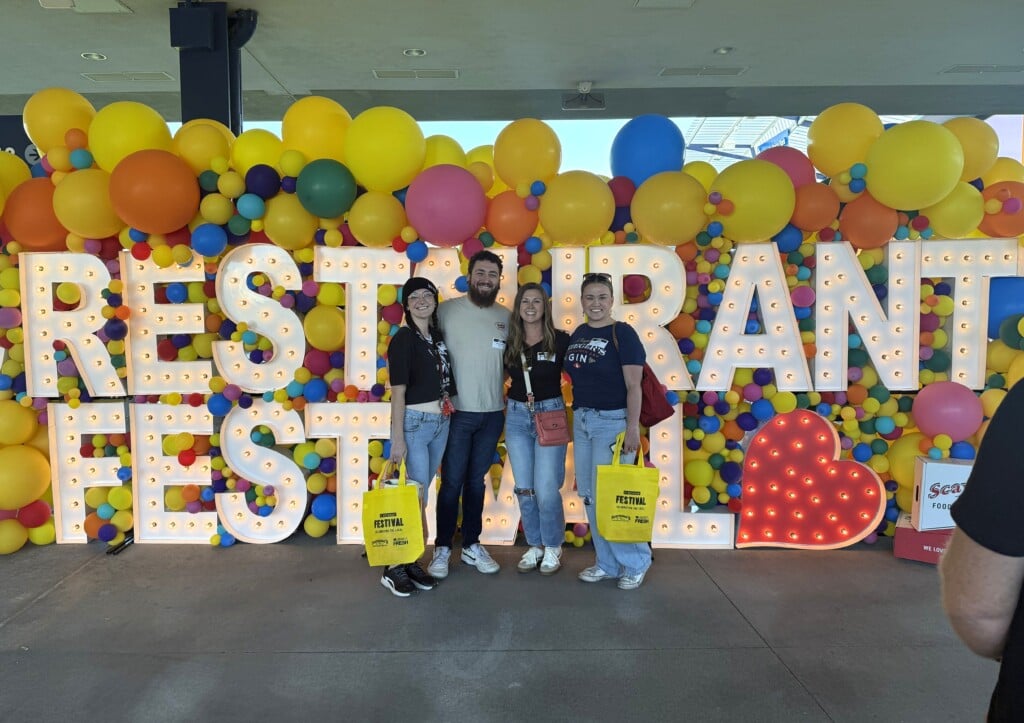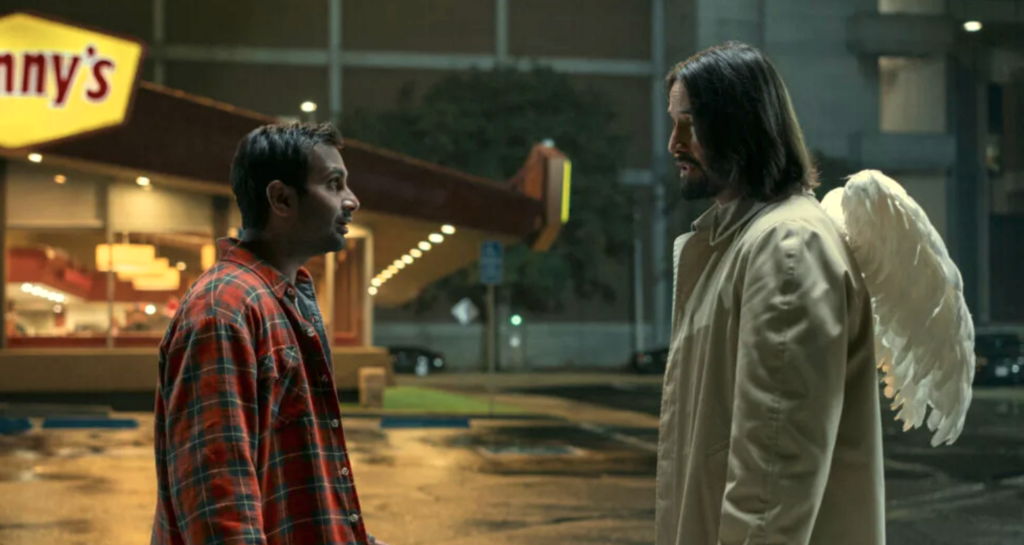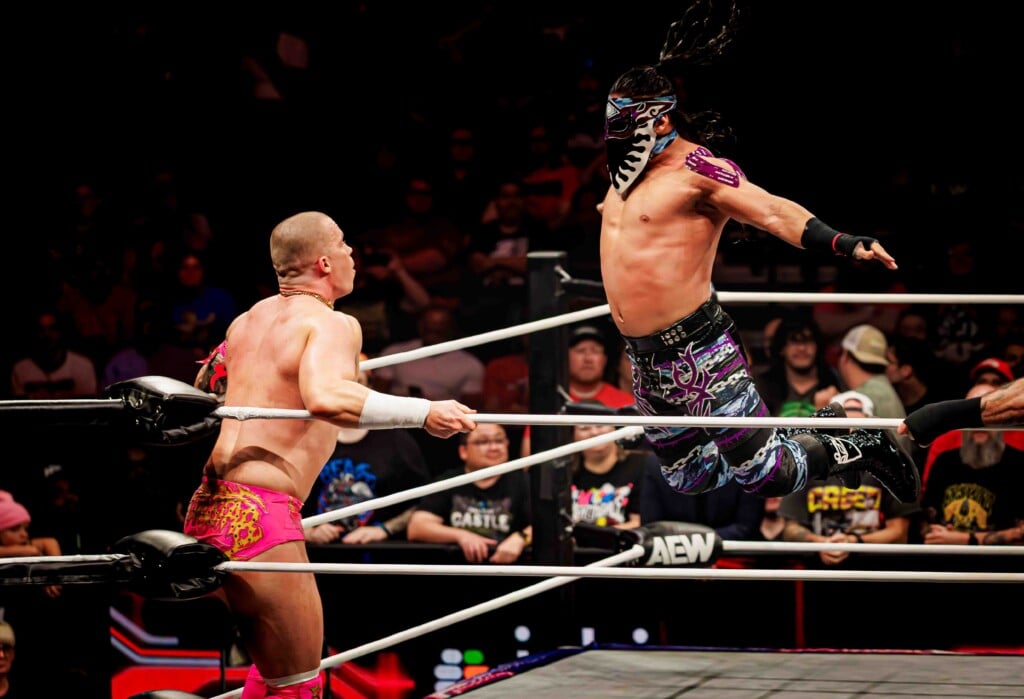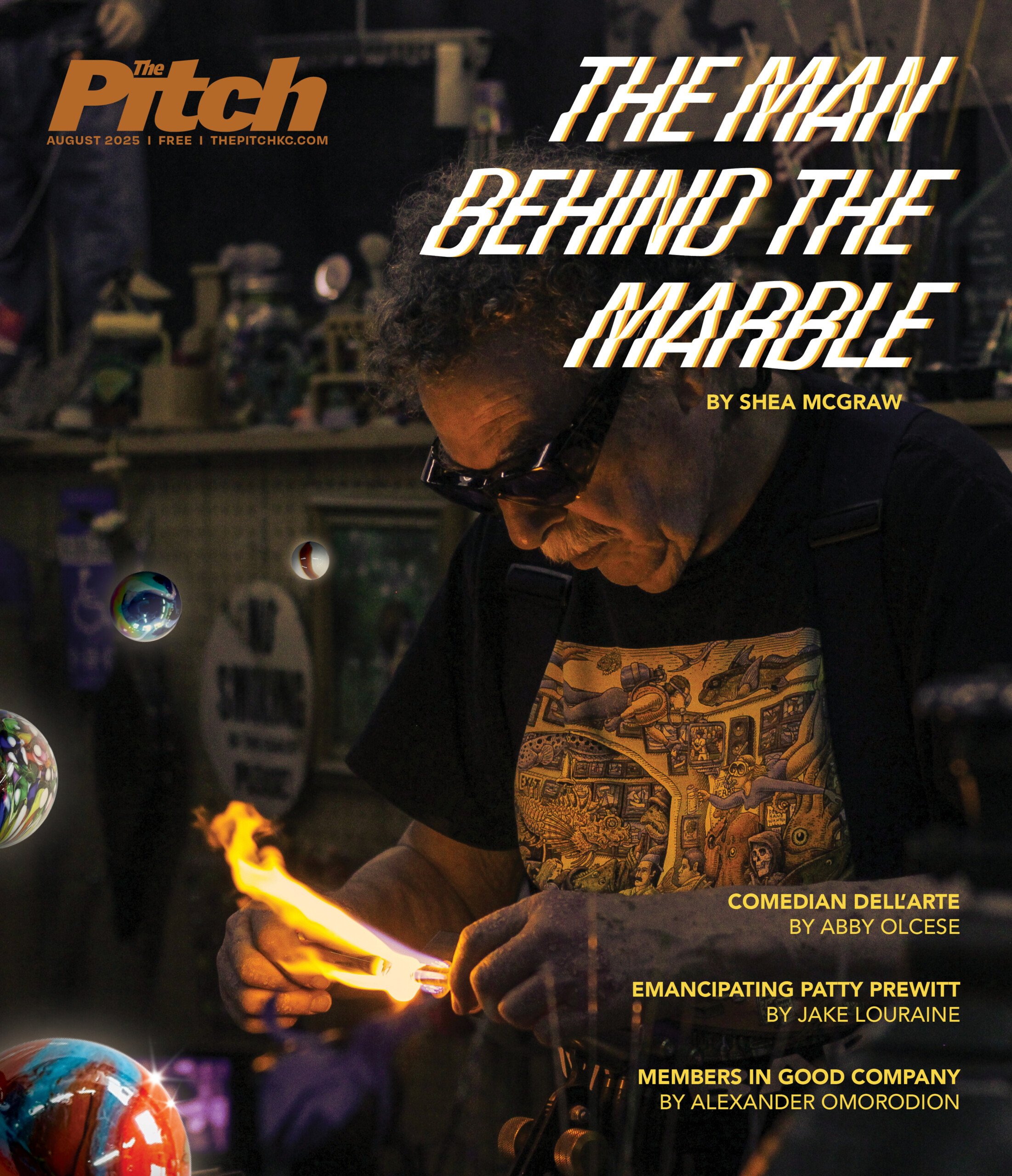In the East Bottoms, John McDonald sets out to brew the future


In 2013, not long after John McDonald sold Boulevard Brewing Co., he purchased an old fire station in the East Bottoms, at the corner of Guinotte and Montgall avenues. He had sentimental reasons: The firehouse was built in 1903 by the Heim Brewing Co., the largest beer maker in Kansas City at the turn of the last century — the Boulevard of its day.
A few weeks ago, McDonald — red Boulevard T-shirt, spiky white hair, sharp glasses — arrived at Heim No. 20, as the fire station was once known, and plopped down on a second-floor couch. He and Jamie Jeffries, a local general contractor, have renovated the building and converted it into the headquarters of Bottoms Up Collective LLC. The fire pole remains.
Bottoms Up represents a sort of second act for McDonald’s professional life. Its goals are ambitious — arguably as ambitious as starting a craft brewery at a time when people seemed content choosing between Coors and Budweiser. He means to reinvigorate the East Bottoms and make it a citywide destination for food, beer, manufacturing and entertainment. He said his enthusiasm for this area dates back to his pre-Boulevard days.
“Before Boulevard, I was a cabinetmaker — this was back in the ’70s and early ’80s,” McDonald told me. “So sometimes I’d come down to Case Supply [headquartered in the East Bottoms] and buy cabinet hardware. And I knew it was an old brewery, and then when I got into doing Boulevard, I started researching it and really got into the history of everything Heim did down here.”
He went on: “The East Bottoms today is kind of like what Southwest Boulevard was when I started working at my dad’s industrial-supply business, back in the 1970s. It’s industrial, a little rough around the edges, kind of this forgotten part of the city.”
Eventually, of course, McDonald bought his father’s building, founded Boulevard and, along with DST Systems, helped spur development and create new jobs along that corridor. Today, the restaurants in the area do steady business, the Roasterie’s airplane dents the skyline, and new bike lanes on the street reach into the booming Crossroads Arts District.
In recent years, McDonald has been steadily buying up property in the East Bottoms. In the mid-aughts, he purchased the old Heim bottling plant (just south of the train tracks on Montgall and built in 1901) and the warehouse next to it, formerly the home of Case Supply, which Boulevard used for storage — overflow warehouse materials, pallets, empty kegs, packaging materials.
A few years later, McDonald bought the storefronts across the street — where the Local Pig and Urban Provisions General Store are now located. (He has since sold those properties to Jeffries.) In the last year, Bottoms Up has added to its portfolio a few vacant lots and some of the housing stock in the area. It also recently picked up the Electric Park Café (a diner that once was a Town Topic) and some land adjacent to it.
The plans for all of this remain just that — plans. But every indication is that McDonald is committed to doing something significant in the East Bottoms.
“What I see down here is a part of the city that’s close to downtown, but at the same time is a great place for entertainment because it’s so isolated that nobody really cares about the noise,” McDonald said. “It’s got a great history. And it’s this finite area trapped between the bluff and the river with industrial businesses on both sides. But in the middle of all that, there’s this little community — this manageably sized thing where it seems like we could actually make a difference.”

The charm and the potential of the East Bottoms are not as immediately obvious as those of the West Bottoms, where art galleries, new restaurants and condos continue to emerge. The five-minute drive east from the City Market to the Bottoms Up offices takes you past a Cargill soybean-processing plant, a sheet-metal company, loading docks and a mobile-home park — a vibe less Detroit and more Paducah, Kentucky.
At Hobo’s, a small bar and grill on Agnes Avenue, truckers and men wearing fluorescent vests sip cheap beers and chew on pork tenderloins. At the corner of Guinotte and Olive, two 1-percenter motorcycle gangs — El Forastero and the Galloping Goose — share clubhouse space. The small frame houses that remain in the area — about 240 residences, containing about 369 people, according to the most recent U.S. Census estimates — are mostly old and dilapidated. It’s a neighborhood pocked with condemned structures and scarred by chain-link fences. Some of the dogs are scary, some of the porches overrun with hoarded junk. Trains blow through regularly on the Union Pacific Railroad tracks, which bisect the neighborhood just north of Guinotte Avenue.
[page]
In this harsh, unlovely landscape, though, lies a great deal of Kansas City history. The area was originally settled by Belgian and German farmers, drawn to the river valley by its rich soil. In 1884, Ferdinand Heim, an Austrian-born beer maker from St. Louis, expanded his business westward by purchasing the Star Ale Brewery in the East Bottoms. Specializing in German lager, Heim and his sons built Heim Brewing Co. into the largest brewery in Kansas City. They constructed multiple buildings for their operation, adjacent housing for their employees, the aforementioned fire station, and eventually a streetcar line connecting Heim Brewing with the City Market.
In 1899, the Heim family built Electric Park, a Coney Island–style amusement park. Bounded by Montgall, Chestnut, Nicholson and Rochester avenues, it contained a roller coaster, a 2,500-seat theater and a German beer garden (with Heim beer piped directly from the brewery), among other amenities. John Philip Sousa once performed there. It was, says local historian Jason Roe, “the most popular working-class entertainment venue available in Kansas City.”
As the city sprawled southward from the Missouri River, the Heims closed the East Bottoms Electric Park and opened a new one at 47th Street and the Paseo. That venue, which opened in 1907, is said to have inspired Disneyland; as a child, Walt Disney lived not far away, at 3028 Bellefontaine.
Over time, the temperance movement gained steam, Prohibition hit, and the Heims’ brewery business went under. Many East Bottoms residents scattered, and the area became a mostly industrial section of the city, a place where somebody like Frank Hicks might find work at a body shop, as he did in the 1960s and ’70s.
“I was doing body work on trucks in an old Quonset hut over on the 900 block of Prospect, then at a place on Guinotte across from where the trailer park is now,” Hicks said recently, sitting at a table inside Knuckleheads Saloon, the music venue he owns at the corner of Montgall and Rochester. “Then I bought this spot in 1980. Been here ever since.”
In 1997, Hicks opened a storefront to sell motorcycle parts and fixed-up Harleys in what was originally a railroad boardinghouse, at 2801 Rochester.
“At first, we’d be open from noon to 6 p.m. on Saturdays. Then we started staying open and doing live music from 6 to 9 p.m.,” Hicks said. “You could get a beer and a taco, listen to some music. Then we started staying open until midnight. Then we opened on Fridays for music. Then Thursdays, too. And so on. It just became this thing.”
In 2001, Hicks obtained a liquor license and formally opened Knuckleheads as a music venue. It has since become the premier destination for roots, country and blues music in Kansas City, and arguably the entire Midwest. That so many noteworthy touring acts play here has forced Kansas City music fans — many of whom would otherwise remain ignorant of the East Bottoms’ existence — to travel to this remote part of the city.
The Local Pig, which operates inside what is believed to have been a pre-Prohibition saloon, at 2618 Guinotte, has become a similarly irresistible lure to foodies with no previous cause to see the East Bottoms. McDonald bought the building in 2009 and hired Jeffries to renovate it. In 2012, Alex Pope leased the space, offering a modern take on the classic butcher shop, emphasizing locally sourced meats, cheeses and charcuterie.

“When I worked at R Bar and the American [Restaurant], from time to time I’d have to run down to Seattle Fish, which is a fish wholesaler with a location a block east of where Local Pig now is,” Pope told me. “And that building always caught my eye. It just stuck in my head. When I started thinking seriously about opening Local Pig, it just seemed like the perfect place for an old-school butcher shop.”
[page]
The Local Pig has since opened a food truck, Pigwich, which draws a steady weekday lunchtime crowd to the East Bottoms. Outdoor seating was recently added to the east side of the building.
“The hard part in the beginning was getting people to come here for the first time,” Pope said. “Once a first-time person figures out they can take Third Street from the City Market, it’s all good. We’re five minutes from downtown, and the rent is very reasonable. When you have a situation like that, you can afford to take risks like we have because the overhead isn’t crushing.”
Savannah Northcraft echoes that sentiment. Along with Britton Turnbull, she opened Urban Provisions, a store selling American-made goods — local jewelry, apothecary items, small-batch perfume, KC-themed T-shirts, artisan lip balm and the like — last year. The shop is next door to the Local Pig, where Northcraft’s husband, Adam Northcraft, is the general manager.
“I was getting interested in the idea of doing a lifestyle store of some kind, and I went and found a book about starting a retail store,” Savannah Northcraft told me. “And on, like, the very first page, the author advises against opening a boutique shop in a historically industrial neighborhood. This place is across from a brick masonry and down the street from a trailer park. But the overhead was low enough down here that I felt like I could roll the dice.”

Northcraft said the shop has had “amazing momentum since day one.” Following the lead of the Local Pig, which offers classes in butchering and charcuterie, Urban Provisions has since rented space above the shop and booked craft workshops. Along with Jamie Braun, employee No. 3 at Bottoms Up, Northcraft has also pioneered Third Fridays in the East Bottoms. (The next one is slated for September.)
“It’s one part pop-up shop, one part street festival,” Northcraft said. “Often I’ll come across some product that, for whatever reason, doesn’t fit into what we do at the shop, but I still want to work with the people who made it. So Jamie and I put together this event where we use the firehouse, bring some of these makers down here, and do kind of an art walk. Pigwich stays open. Usually there’s a music element of some kind. One time, we served a bunch of free pho. It’s just a cheap way for people to come down, eat, drink, shop and experience a different corner of the city.”
What seems to excite McDonald most about the possibilities of the East Bottoms is the idea of attracting businesses that, like Boulevard, make things and employ people. He and Jeffries estimate that the efforts of Bottoms Up have brought about 40 new paid positions to the East Bottoms.

J. Rieger and Co., a spirits distillery operated by Andy Rieger and Ryan Maybee, accounts for four of those jobs. Last summer, it moved into the 15,000-square-foot warehouse at 2700 Guinotte, the former home of Case Supply.
“John came into the Rieger one night, and I told him that we’d been looking for a space to do a distillery,” Maybee, co-owner of the Rieger Hotel Grill & Exchange, told me. “I was looking at some pretty expensive 6,000- and 8,000-square-foot spots in the Crossroads. John said, ‘Don’t do that. I’ve got a perfect spot for you in the East Bottoms.'”
Last November, two years after that conversation, J. Rieger & Co. rolled its first product, Kansas City Whiskey, into retail stores. To avoid selling whiskey that was insufficiently aged, they sourced their first batches from other distilleries. Soon, however, J. Rieger will bottle bourbon and rye that have been distilled and aged in the East Bottoms.
[page]
But it is in the historic Heim bottling plant — now attached to the J. Rieger building through a sort of breezeway that Jeffries has built — that McDonald’s grandest plans for the East Bottoms are likely to take shape. Here, he envisions a food hall, an old idea that has recently come back in style in cities such as New York, Chicago, Los Angeles and Denver. Under one roof, it would combine retail, restaurants, and incubator space for small-business artisan producers. Its working name: Electric Park.
“It’s a loose idea at this point, but I’m enamored with the idea of putting a bunch of things in the same place and having them all work together,” McDonald said. “Early on, I saw it as about food production — we’d lease space to people who produce vinegar, sauerkraut, bread, coffee, cheese, whatever, and then have a retail overlay to it all and probably a few restaurants in there. But I don’t necessarily think it has to be just a food hub. It’s more about making stuff.”
To ease some of the costs associated with McDonald’s vision, architectural historian and consultant Cydney Millstein is working to get the bottling plant on the National Register of Historic Places. Built in 1901, the plant was designed by Charles A. Smith, who, as lead architect for the Kansas City school district from 1898 to 1936, also designed many of the city’s public schools.
“You can get on the National Register for significant architecture but also due to the history of a building,” Millstein said. “In the case of the Heim bottling-works plant, the architecture is pretty unique. There are some water-plant buildings around town that have some commonalities, but the Palladian-like windows, which allow so much light in, are really interesting. But its history is just as significant — its ties to Heim and the beer industry.”
Millstein submitted a nomination for the National Register at the end of July. Once historical tax credits are lined up, the plans for Electric Park will come into clearer focus.

In the meantime, Bottoms Up has bought all the available land-bank holdings in the East Bottoms and also recently closed on a substantial amount of residential real estate, purchasing those properties from Robert Ehinger.
“Right now, we either own or have under contract about 12 houses, most of them on Agnes and Prospect and Montgall and Kansas avenues, all from the same seller,” Jeffries said. “And we bought the Electric Park Café building from him, also. The one exception is, we bought, from Frank Hicks, the original grocery store on Montgall that served the East Bottoms in the early 1900s. It’s run-down and uninhabitable right now. But we’ll be renovating it and turning it into something.”
The plan with the residences is to continue renting to the tenants at the same prices, with the aim of restoring and preserving the structures. Vacancies that arise — a few of the houses that Bottoms Up purchased were empty — will be filled with an eye toward bringing the makers and chefs involved in the Electric Park project to live in the East Bottoms.
“We are actively trying not to be perceived as wanting to take over the neighborhood,” Jeffries said. “All the places we bought, people have been living there a long time. We’re not about to come in and start kicking those people out.”

Bottoms Up has also won a grant for a Brownfields assessment of the area bounded by Front Street and Guinotte Viaduct, and by Wabash and Bellefontaine. A thumbs-up from that assessment would pave the way for urban agriculture in the area. Bottoms Up has been in talks with the Giving Grove, a local nonprofit that assists low-income communities with growing orchards on vacant lots and community grounds. Rob Reiman, director of the Giving Grove, said the East Bottoms plan would likely involve a cluster of 20 trees along the train tracks.
“Some apple, some pear, some Asian pear, maybe some hazelnut,” he said. “And we’re also talking about edible landscaping, where you’d have some bush cherries, some serviceberry, maybe some fig, maybe clove currants. I suspect we’ll be planting either this fall or next spring.”
If this is all beginning to sound a bit utopian, it’s useful to remind yourself that McDonald — who sold Boulevard for a reported $100 million — is not a move-to–Mission Hills, donate-a-wing-to-the-museum type of guy. He still lives on the West Side. He would prefer to use his money to build something useful and new — and something with a certain cool factor. Talking to him about these ideas, there is a sense that profit alone would not define their success. You wonder whether he views the East Bottoms as an opportunity to add another layer to his KC legacy.

“I think maybe, yeah,” McDonald said when I asked him that question. “But I also really do see opportunity in the East Bottoms. I think it’s a component of a much larger trend of people wanting to move back to the city. And some of the things we’ve done so far down here are working.”
He went on: “I’ve gambled on strange ideas before, and they’ve worked out. Sometimes you have to be a little crazy to see the potential in things.”




